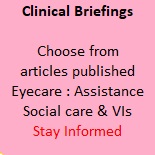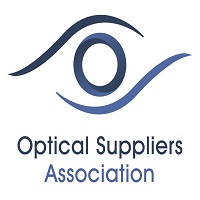Professional Matters Optometry & Dispensing
LV Commissioning and review long overdue
LV Commissioning and review long overdue
CCEHC survey highlights need to review commissioning and provision of low vision services to deliver more accessible and
integrated care for patients in England.
The Clinical Council for Eye Health Commissioning (CCEHC)1, which represents the major clinical professions and sight loss charity organisations in the eye-care sector, has conducted a survey on the commissioning and provision of low vision assessment services in England.
The survey was conducted for five weeks from 5th April 2021 to gain an understanding of the impact of the pandemic on low vision assessment services between April 2020 – March 2021. The survey showed that prior to the pandemic, there was variation in the use of service specifications, protocols and thresholds for low vision assessment. Since the pandemic service provision has been challenging, with deployed clinical staff, patients and some practitioners shielding, and lower clinic numbers to maintain distancing. This has been associated with a significant fall in certifications of visual impairment during lockdown periods2. Detailed survey findings can be found at ccehc.org.uk.
Based on these findings, the CCEHC makes the following recommendations, and calls for low vision services to be included in system recovery and transformation planning:
Manage low vision assessment backlogs by:
o risk assessment of patients waiting to prioritise those in greatest need
o triage to interim support by another part of the system
o aiming to clear backlogs within 6 months.
Review existing low vision service provision (demand and capacity), protocols and pathways to:
o scope potential for more integrated services
o incorporate remote consultations for prioritisation and follow-up as appropriate e.g., patient initiated follow up, access to advice and guidance, review to check managing with existing aids/ new requirements
o ensure there is domiciliary provision for those that require it
o ensure Eye Clinic Liaison Officers are core members of the low vision service team and link across primary, community, hospital and social care
o include provision of information on digital assistive aids (e.g., digital magnifiers) and signposting to IT courses for those who are visually challenged.
Develop service specifications and quality standards for integrated low vision care as part of a whole systems approach to:
o ensure consistent access and availability of services
o offer a choice (where possible or appropriate) making optimal use of primary, community, local authority and hospital services
o provide processes for governance, audit, engagement, service improvement, and review of services provided
o identify a dedicated (ring fenced) low vision budget that can be accessed system wide (primary, secondary and tertiary) to ensure a sustainable service.
Ms Parul Desai, CCEHC Chair commented ‘Many providers have tried to ensure safe services and looked to innovative solutions. The learning from COVID-19 is already changing the way some low vision services are delivered. We encourage all commissioners and providers of eye health services to review their current low vision assessment service provision, particularly use of remote consultations for pre-assessment review and follow up /monitoring; and their processes for ensuring equitable access to services meeting consistent standards of care. The development of more integrated low vision services has significant benefits for patients, practitioners and organisations across health and social care.
The CCEHC will be considering further phases of work to monitor progress’.
























